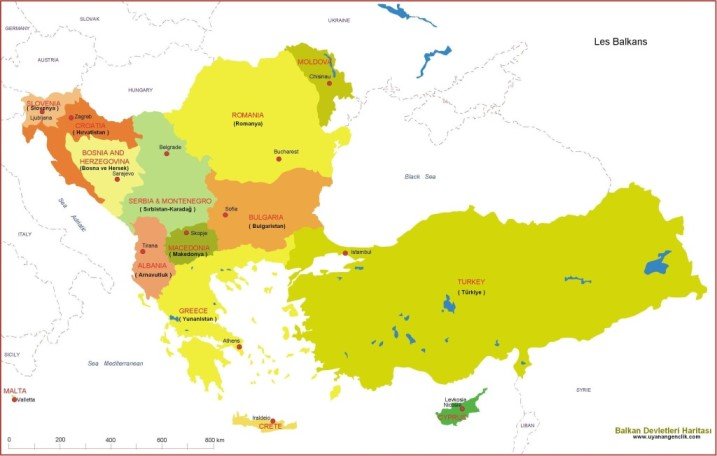Realty Developments in the Balkans: An Overview of the Real Estate Market
Realty Developments in the Balkans: An Overview of the Real Estate Market
The Balkans, a region located at the crossroads of Eastern and Southern Europe, has become an increasingly attractive destination for real estate investors in recent years. With its rich cultural heritage, stunning landscapes, and growing economic opportunities, the Balkan realty market is witnessing significant development. In this article, we provide an overview of the real estate market in the Balkans, focusing on the current trends and future prospects.
1. Increasing Demand for Residential Properties
Over the past decade, the Balkans has experienced a rise in demand for both residential and commercial real estate. As the region has become more economically stable and integrated into European markets, the demand for homes, apartments, and vacation properties has grown. Cities like Belgrade, Sofia, and Sarajevo are witnessing rapid urbanization, with a steady increase in the construction of residential properties. This trend is largely driven by the increasing purchasing power of local populations and the influx of foreign investors looking for affordable, yet lucrative, opportunities.
2. Affordable Property Prices
One of the major attractions of the Balkan realty market is its affordability compared to Western European cities. Property prices in the Balkans are still relatively low, especially in countries like Albania, Montenegro, and North Macedonia. This presents an excellent opportunity for both foreign investors and locals to enter the market at a fraction of the cost of properties in other parts of Europe. As demand for real estate continues to rise, property values are expected to increase, making it a promising area for long-term investment.
3. Tourism and Vacation Homes Drive Demand
Tourism plays a significant role in the growth of the Balkan real estate market. With its stunning coastlines, historical landmarks, and vibrant cities, the Balkans attract millions of tourists each year. This has led to a growing demand for vacation homes, rental properties, and hotels, particularly in coastal countries like Croatia, Montenegro, and Greece. Investors are capitalizing on this trend by purchasing properties that can be rented out to tourists during the high season, generating significant rental income.
4. Urbanization and Infrastructure Development
Urbanization in the Balkans is progressing at a rapid pace, with cities undergoing extensive infrastructure development. Governments in the region are investing in transportation networks, public services, and utilities, making urban centers more attractive to both residents and businesses. This urban growth is driving the demand for commercial real estate, including office spaces, retail centers, and mixed-use developments. As the region’s infrastructure continues to improve, the real estate market is expected to grow even further, offering more opportunities for investors.
5. The Rise of Luxury Real Estate
As the Balkans experience economic growth and an increase in foreign investment, luxury real estate has emerged as a growing sector in the region. High-net-worth individuals are increasingly attracted to the region’s prime properties, particularly in cities like Dubrovnik, Belgrade, and Sofia. Luxury developments, including upscale apartments, villas, and resort properties, are becoming more common as the demand for high-end living spaces rises. This trend is expected to continue as the region becomes more integrated into global real estate markets.
6. The Impact of EU Integration
Several Balkan countries are in the process of joining the European Union, or are seeking membership in the near future. EU integration brings economic stability and the potential for increased foreign investment, both of which have a positive impact on the real estate market. As EU membership increases the flow of capital and opens up new markets, the real estate sector in the Balkans is poised for further growth and development. This is particularly evident in countries like Serbia, Albania, and Montenegro, which are expected to see increased property demand as they align more closely with EU regulations.
7. Opportunities in Commercial and Industrial Real Estate
In addition to residential real estate, commercial and industrial properties are also experiencing growth in the Balkans. As businesses expand and international companies enter the market, the demand for office spaces, warehouses, and retail locations is on the rise. Cities such as Belgrade, Sofia, and Zagreb are seeing an increase in commercial property development, making it a good time for investors to explore opportunities in this sector.
Conclusion
The real estate market in the Balkans is experiencing significant growth and development, driven by factors such as economic stability, increasing tourism, urbanization, and the rise of luxury properties. With affordable prices and high returns on investment, the region offers attractive opportunities for both local and international investors. As infrastructure improves and EU integration continues, the future of the Balkan real estate market looks promising, with plenty of potential for both short-term and long-term investment.
